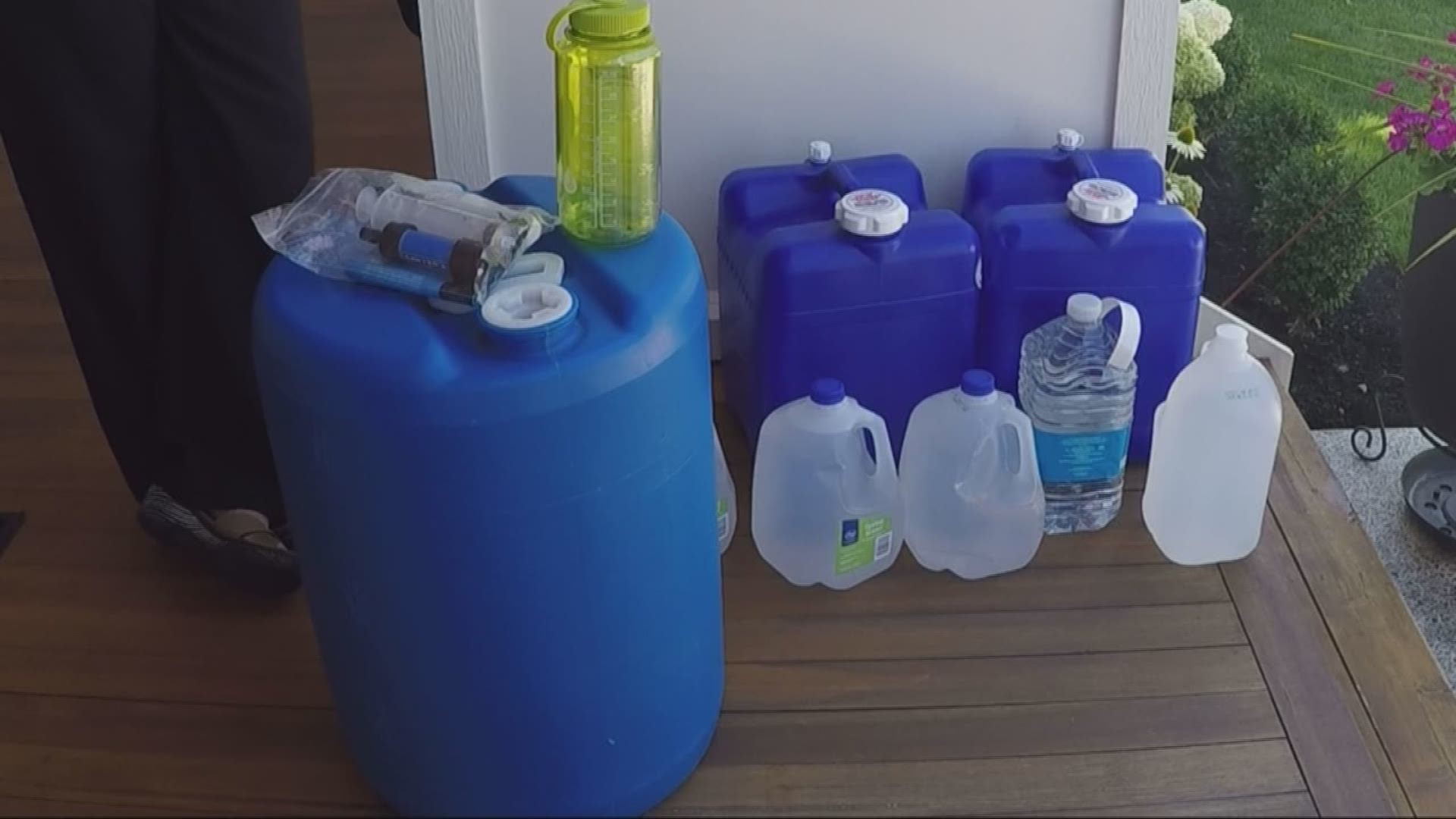(The video in this story first aired in September of 2017.)
Shaken residents were cleaning up Sunday from two of the biggest earthquakes to rattle California in decades as scientists warn that both should serve as a wake-up call to be ready when the long-dreaded "Big One" strikes.
California is spending more than $16 million to install thousands of quake-detecting sensors statewide that officials say will give utilities and trains precious seconds to shut down before the shaking starts.
Gov. Gavin Newsom said it's time residents did their part by mapping out emergency escape routes and preparing earthquake kits with food, water, lights and other necessities.
(Story continues below)
At a minimum, the American Red Cross urges residents to be fully prepared with an emergency preparedness kit that could last up to 72 hours.
The Red Cross advises the kit be easy to care in case you need to evacuate your home.
Below is a list of items your kit should include:
- Water: one gallon per person, per day (3-day supply for evacuation, 2-week supply for home)
- Food: non-perishable, easy-to-prepare items (3-day supply for evacuation, 2-week supply for home).
- Flashlight
- Battery-powered or hand-crank radio (NOAA Weather Radio, if possible)
- Extra batteries
- First aid kit
- Medications (7-day supply) and medical items
- Multi-purpose tool
- Sanitation and personal hygiene items
- Copies of personal documents (medication list and pertinent medical information, proof of address, deed/lease to home, passports, birth certificates, insurance policies)
- Cell phone with chargers
- Family and emergency contact information
- Extra cash
- Emergency blanket
- Map(s) of the area
Consider the needs of all family members and add supplies to your kit. Suggested items to help meet additional needs are:
- Medical supplies (hearing aids with extra batteries, glasses, contact lenses, syringes, etc)
- Baby supplies (bottles, formula, baby food, diapers)
- Games and activities for children
- Pet supplies (collar, leash, ID, food, carrier, bowl)
- Two-way radios
- Extra set of car keys and house keys
- Manual can opener
- Additional supplies to keep at home or in your survival kit based on the types of disasters common to your area:
- Whistle
- N95 or surgical masks
- Matches
- Rain gear
- Towels
- Work gloves
- Tools/supplies for securing your home
- Extra clothing, hat and sturdy shoes
- Plastic sheeting
- Duct tape
- Scissors
- Household liquid bleach
- Entertainment items
- Blankets or sleeping bags

